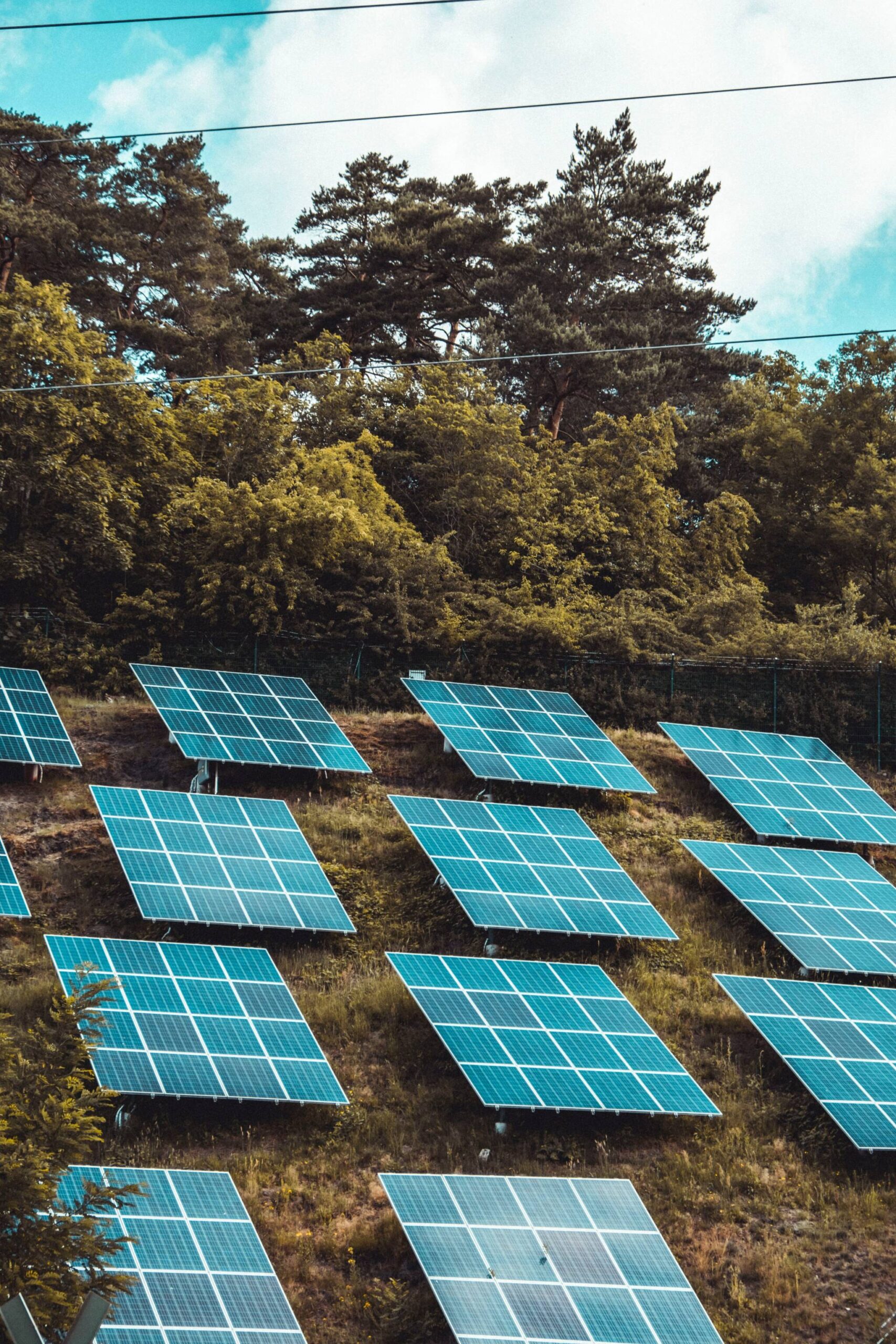By Isabel Ashley
Across a 19-acre plot at Douglas and Bailer Hill roads, Orcas Power & Light Cooperative plans to install their latest community solar project on San Juan Island. The project, which was started before the COVID-19 pandemic and was subsequently delayed by the global health crisis, is currently in its permitting stages.
The project is part of Community Solar, OPALCO’s initiative to provide affordable access to clean, alternative power and store local energy for essential services through solar panel arrays and batteries. Community members can subscribe to the project and benefit from the energy produced from the panels in the form of energy credits as a line item on their electrical bills, based on the amount of shares purchased and the total solar production each month (with more produced in the summer, less in the winter).
The location for San Juan Island’s community solar project is a strategic one, as it will be connected to the circuit that feeds the town of Friday Harbor, Peace Island Medical Center, the SJI Fire Department and the Friday Harbor Airport.
According to Suzanne Olson, Communications Manager for OPALCO, “[We’re] building these microgrids in order to have a small supply of local energy to keep our essential services up and running when there are outages and disruptive events on the mainland. These events are becoming more and more common with climate change impacts.”
In 2019, the Washington state legislature known as the Clean Energy Transformation Act went into effect, mandating that “utilities must supply Washington customers with electricity that is 100% renewable or non-emitting by 2045,” according to the Washington State Department of Commerce. Switching from reliance on fossil fuels to entirely renewable energy sources is no easy feat for many organizations and suppliers, and they will have to spend time and resources to replace firm power plants with renewable sources such as wind and solar.
As for OPALCO, a majority of their energy comes from Bonneville Power Administration on the mainland through the Federal Columbia River Power System, which delivers a fuel mix that is 95% greenhouse gas-free (~83% hydropower), according to Olson. OPALCO expects less reliability from their mainland provider during the decarbonization process as power suppliers focus their efforts on the switch to more renewable resources.
“Even though it’s challenging, [OPALCO] is very supportive of decarbonization, because it’s doing the right thing for our very sensitive marine environment”, said Olson.
When looking at non-emitting energy alternatives for the San Juan Islands, few available technologies are effective. Wind and solar are the two main renewable resources available. The islands do not receive wind regularly enough to generate sufficient power, according to Olson, who says that solar is the most cost-effective renewable energy available at the moment. Although OPALCO is exploring tidal energy, which would be generated by turbines in the water that are moved by the changing of the tides, it is a very expensive technology that requires further study in the United States before widespread adoption.
The solar route has proven to be very effective and well-received by the community, when examining OPALCO’s first Community Solar project, the Decatur Island Microgrid. Located on the Decatur Island substation, the 3.6 acres of solar panels produce around 570,000 kilowatt hours annually, with approximately 270 OPALCO members who own shares of the project. According to Olson, while utilities around the country have enacted similar solar infrastructures to provide communities with solar power opportunities, it can take six months to a year to sell all of its member subscriptions, while the Decatur project sold out its memberships within one month of opening.
Another important aspect of the Decatur project, and for the current Bailer Hill project, is that OPALCO received grants to provide solar benefits to low-income households.
“There are a lot of people on the islands who can’t afford to invest in the solar shares and are really struggling to make ends meet,” said Olson. “The grant we received for the Bailer Hill project will buy one million dollars of solar production credit on that project, and those credits will be moved into our member bill assistance program,” said Olson. “It levels the playing field and shares the benefits of solar with everyone.”
The monthly bill credit program, called Energy Assist, provides a monthly credit on the power bills for low-income households, offsetting the fixed-charge amount on their bill. CETA requires utilities to make programs and funding available for energy assistance to low-income households, providing yet another challenge for energy providers to solve in the coming decades, while OPALCO has a head start.
“We don’t want to leave anybody behind based on economics. [Since] we already have this program in place, we’re in pretty good shape,” said Olson.
OPALCO expects to complete the permitting process in the coming months and will move on to the design phase of the project. For more information on Community Solar, visit https://www.opalco.com/save/community-solar/ or email solar@opalco.com to receive updates and be notified when the Bailer Hill project is open for member subscriptions.



